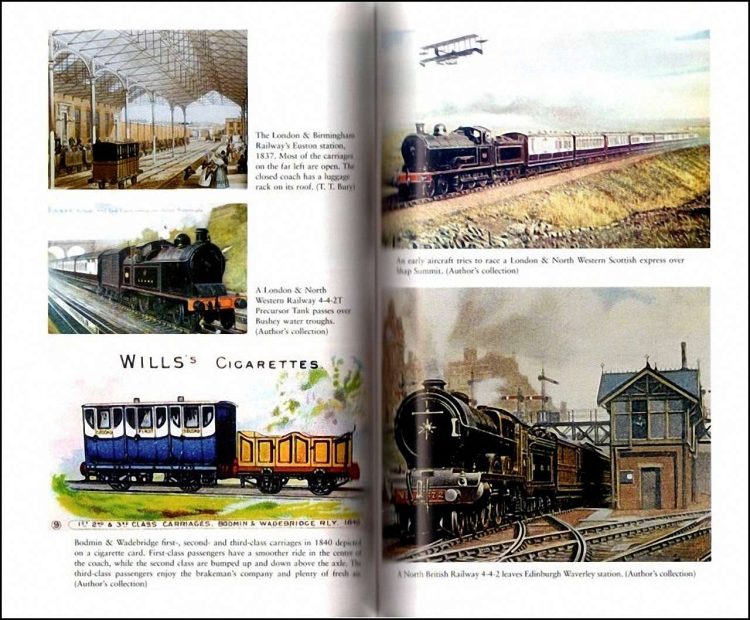Published in June 2021 by Amberley Publishing and written by Colin G. Maggs, this paperback book measures around 12.9 cm x 19.8 cm , and has 416 pages and 180 illustrations. It has a published price of £12.99 although Amberley Publishing currently has it on offer at £11.69, and at the time of writing it can be purchased from Amazon for £10.75.
Colin Maggs is a prolific author of railway books, but on opening this one it was immediately obvious that there was something different to his other volumes, especially in its size of over 400 pages.
The author has chosen to treat the history in chronological order, but in doing so it loses a lot of its flow. The book has 24 chapters and four Appendices, which do serve to divide the book up into manageable sections, yet the chapter titles seem somewhat incongruous.
For example, Chapter 6 is titled “An era of innovative bridges”, yet most of the chapter is not concerned with bridges, but looks at railways that opened between 1848 and 1850. Only the Britannia Bridge across the Menai Straits and Chepstow bridge are treated to more than a cursory sentence.
Chapter 11 is titled “Severn Bridge” but has just four paragraphs discussing the former bridge between Sharpness and Lydney in Gloucestershire, whilst it has seven pages looking at the rule book of the Great Western Railway.
The title of Chapter 15 tries to be all-encompassing with “Fishing & Bananas; Speed to the West; Motor Bus Competition and Steam Railmotors”, but leaves one perplexed as to what it is really about. The second page of the chapter deviates to talk about the Taff Vale Railway being awarded compensation from a trade union for losses caused by a strike, yet the next paragraph talks about the Leadhillls & Wanlockhead Light Railway.
Those are just three examples where more thought could have been given to the structure of the book.
With 180 illustrations there is the promise that the book is profusely illustrated. However, many illustrations are not much larger than a postage stamp. Given that the book is paperback size, with often three illustrations per page their text is often much too small. The illustrations are also in two sections, with a 16-page section printed on glossy paper is fine, as in the examples below.

The majority of illustrations are printed on the same paper stock as the text and, as they are very small in size, they add very little to the content.
A glaring error is the omission of a summary listing the railways quoted in the book with their opening dates. Appendix 1 lists railways opened between 1801 and 1830, but nothing beyond that date. Appendix 3 is a sample list of excursion fares from London in 1850, yet the mathematics seem rather awry. For example, the return fare from Cheltenham which is about 220 miles for the return journey from London, is quoted at six shillings (72 old pence) and 41 miles per penny, whereas in reality, it should be less than three miles per penny.
In summary, this book tells the story of over 400 years of British railway history but the arrangement of the chapters sometimes leads to what seems disjointed reading. Although there is an amazing amount of data, and it is obvious that the author has carried out much detailed research, the book would have benefitted from better organisation. Recommended as a reference source.
The book is available to purchase from Amazon and from Amberley Publishing.
RailAdvent would like to thank Amberley Publishing for providing RailAdvent with a copy of the book for review.